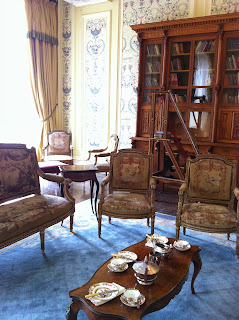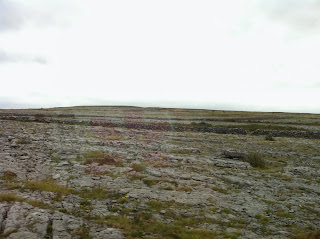Plucked from the pages of a storybook, Kylemore Abbey sits overlooking a beautiful lake and gardens. To have lived here amongst the rock laden mountains would have been amazing. I can just imagine decorating a Christmas tree in the sitting room, getting dressed up for dinners in the fancy dining room, and sipping wine after dinner in the parlor. If you have that kind of money, life is a big party.
Then I walk into the garden masters house, and its modest but also comfortable. This would have been middle class living back in the day.
In the house of the garden workers, the mood is a bit different. One small window provides the only light into the space. They have a room to cook/eat in, and a room to sleep in. I feel my spirit dip standing in the cold, damp darkness, a suffocating feeling closing in. However, workers here probably felt very happy for the food, occupation and warm fire given the great famine the rest of the country had to suffer through.
Then I walk into the garden masters house, and its modest but also comfortable. This would have been middle class living back in the day.
In the house of the garden workers, the mood is a bit different. One small window provides the only light into the space. They have a room to cook/eat in, and a room to sleep in. I feel my spirit dip standing in the cold, damp darkness, a suffocating feeling closing in. However, workers here probably felt very happy for the food, occupation and warm fire given the great famine the rest of the country had to suffer through.
During the potato famine of 45 and 46, nearly half of the country's population either died or left. You can see the lines in the mountains where potato crops once grew. And then you see the rock walls built by the poor during the Great Hunger. Generous landlords would keep their people paid by having them build walls through the mountains. A day's work for a day's wage, even though there were no crops to harvest, this was how they kept their people employed and fed.

































































